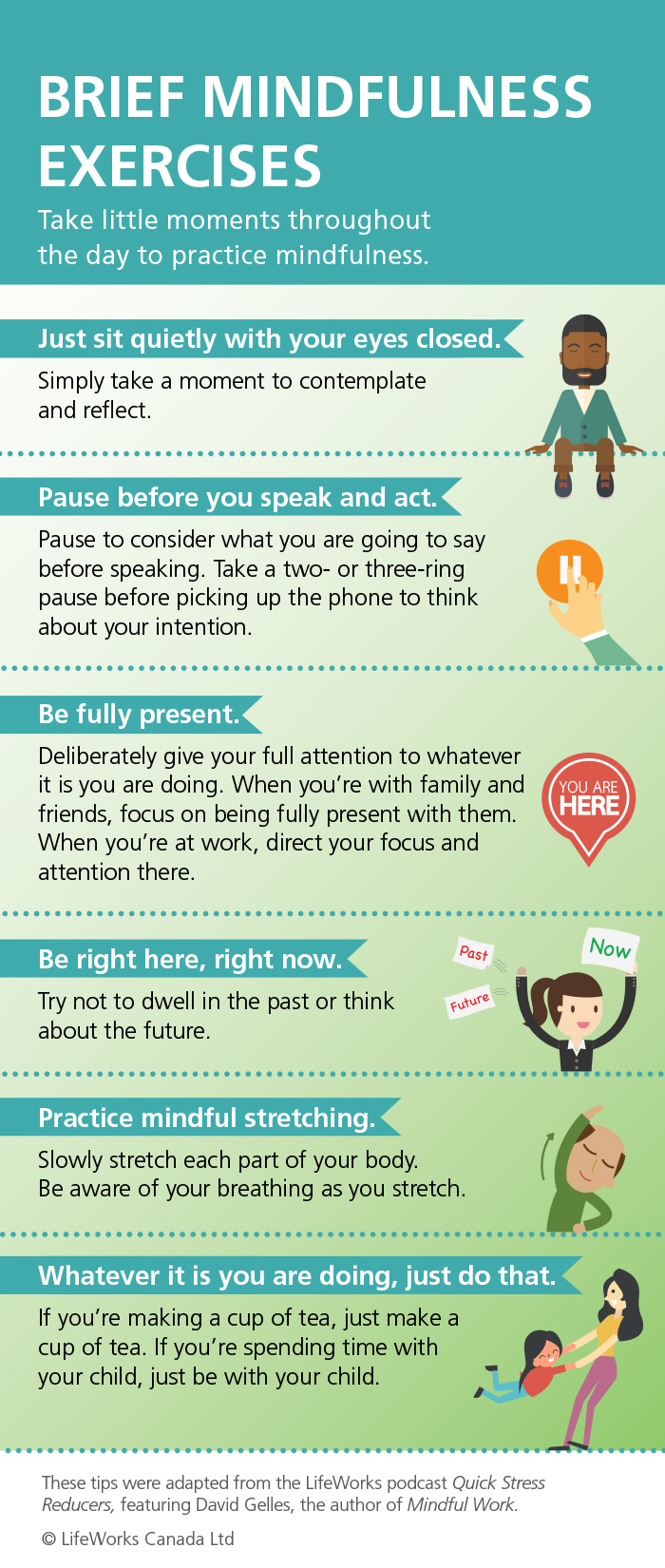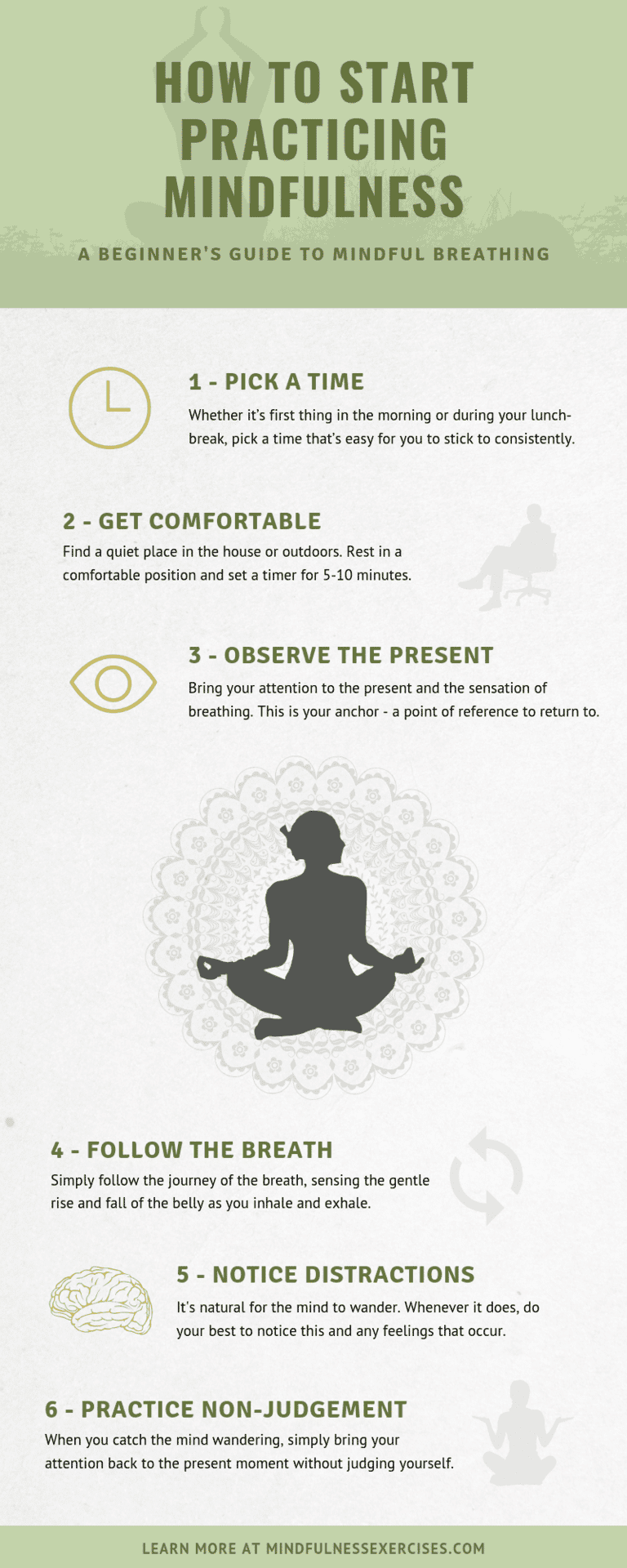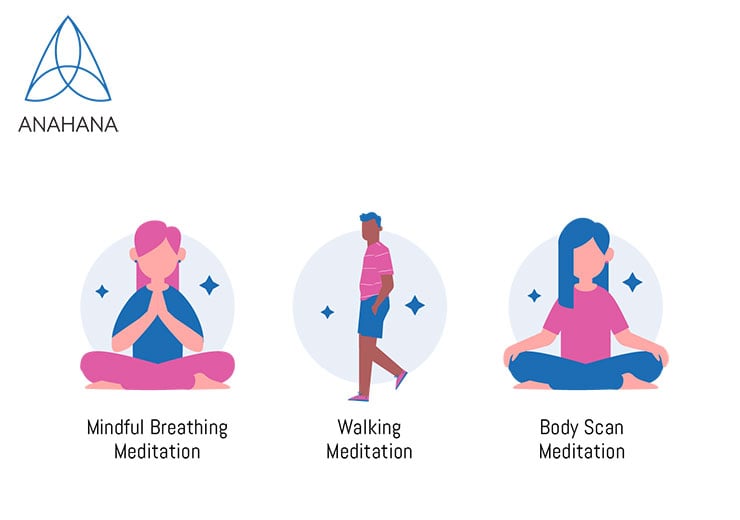Contents
- I. Introduction
- II. The Benefits of Mindfulness in Exercise
- III. Incorporating Mindful Breathing into Your Exercise Routine
- IV. Practicing Mindful Movement for Enhanced Exercise Experience
- V. Utilizing Visualization Techniques during Exercise
- VI. Mindful Eating to Complement Your Exercise Regimen
- VII. Frequently Asked Questions about Mindfulness Techniques for Exercise
- 1. What is mindfulness and how does it relate to exercise?
- 2. How can mindfulness improve my exercise experience?
- 3. Can I practice mindfulness during any type of exercise?
- 4. Is there a specific technique for practicing mindfulness while exercising?
- 5. How often should I incorporate mindfulness into my workouts?
- 6. Can practicing mindful exercises help reduce stress levels?
- 7. Are there any specific mindfulness apps or resources to assist with exercise?
- 8. Can mindfulness be beneficial for beginners in fitness?
- 9. Can mindfulness techniques improve sports performance?
- 10. How long does it take to see the benefits of practicing mindful exercise?
- VIII. Conclusion
I. Introduction

Welcome to the world of mindfulness techniques for exercise! In this article, we will explore how incorporating mindfulness into your workout routines can enhance your physical and mental well-being, allowing you to maximize the benefits of each session.
Exercise is not just about breaking a sweat or pushing yourself beyond your limits; it’s also an opportunity to connect with your body and focus on the present moment. Mindfulness brings awareness to our thoughts, feelings, and bodily sensations without judgment. When applied to exercise, it can transform a mundane routine into a mindful journey of self-discovery.
Mindful Breathing: The Foundation
The first technique we’ll delve into is mindful breathing. By paying attention to each breath as it enters and leaves your body during exercise, you establish a foundation for mindfulness in motion. Focus on the sensation of air filling up your lungs and let go of any distracting thoughts.
Body Awareness: Tuning In
Tuning in to our bodies is crucial for performing exercises mindfully. Bring awareness to each movement you make – whether it’s lifting weights or going through yoga poses – by feeling the muscles engage and release. This heightened body awareness helps prevent injuries while increasing effectiveness.
Sensory Engagements: Amplifying Experiences
Incorporate sensory engagements during workouts by paying attention to sounds, smells, textures, and visuals around you. Listen closely to the rhythm of your footsteps or feel the ground beneath you during a run; fully immerse yourself in these experiences without getting lost in them.
Mental Focus: Concentration Power
A key aspect of mindfulness techniques for exercise is developing mental focus. Train yourself to concentrate on one task at a time instead of multitasking between sets or reps. By honing your concentration power, you can optimize the quality of each exercise and improve overall performance.
Embracing Discomfort: Mind over Matter
Exercise often pushes us out of our comfort zones, but by embracing discomfort with a mindful approach, we can overcome mental barriers. Instead of avoiding challenging exercises or giving up too soon, acknowledge the discomfort and use it as an opportunity to grow stronger physically and mentally.
By incorporating these mindfulness techniques into your exercise routine, you open the door to a more rewarding experience. Stay tuned for the next sections where we will explore additional strategies for integrating mindfulness into different types of workouts!
II. The Benefits of Mindfulness in Exercise

Mindfulness is a powerful practice that can significantly enhance the benefits of exercise. By incorporating mindfulness into your workout routine, you not only strengthen your body but also cultivate a deep connection between your mind and body. Here are some key benefits of practicing mindfulness during exercise:
1. Enhanced Focus and Concentration
When you engage in mindful exercise, you bring your full attention to the present moment. This heightened focus allows you to concentrate on each movement, breath, and sensation within your body. As a result, you experience increased mental clarity and improved concentration both during and after your workout.
2. Increased Body Awareness
Mindfulness encourages a deeper connection with your body by tuning into its signals and sensations. By paying close attention to how each movement feels, you become more aware of any areas of tension or discomfort within your body. This heightened awareness enables you to adjust your form or pace accordingly, preventing injuries and maximizing the effectiveness of your workout.
3. Reduced Stress Levels
Exercise is known for its stress-reducing benefits, but when combined with mindfulness techniques, it becomes even more powerful in alleviating stress. Mindful exercise helps shift our focus away from worries or external distractions by redirecting our attention to our breathing or physical sensations. This redirection calms the mind and activates the relaxation response in our bodies.
4. Improved Emotional Well-being
Mindful exercise promotes emotional well-being by increasing self-awareness and fostering positive emotions such as joy and gratitude during physical activity. When we approach our workouts with an open and non-judgmental mindset, we cultivate self-compassion rather than harsh self-criticism.
5. Greater Mind-Body Connection
Practicing mindfulness during exercise strengthens the connection between your mind and body. As you focus on the sensations in your muscles, joints, and breath, you become more attuned to the messages your body is sending. This heightened mind-body connection allows for a more efficient and enjoyable workout experience.
Incorporating mindfulness techniques into your exercise routine can greatly enhance both the physical and mental benefits of your workouts. By developing a deeper awareness of yourself in motion, you unlock a whole new level of well-being and fulfillment.
III. Incorporating Mindful Breathing into Your Exercise Routine

When it comes to exercise, we often focus solely on the physical aspect and forget about the importance of our mental state. However, incorporating mindfulness techniques into your exercise routine can enhance both your physical and mental well-being. One such technique is mindful breathing.
The Power of Breath
Breathing is something we do effortlessly every day, yet it holds incredible power when practiced mindfully during exercise. By paying attention to your breath, you can tap into its ability to calm and center your mind while optimizing your workout performance.
Begin with Awareness
The first step in incorporating mindful breathing into your exercise routine is to bring awareness to your breath. Before you start any physical activity, take a moment to observe how you are breathing naturally. Notice the rhythm, depth, and pace of each inhalation and exhalation.
Breathe with Intention
Once you have brought awareness to your breath, begin breathing with intention during exercise. Focus on taking slow, deep inhales through your nose and exhaling fully through either the nose or mouth. Allow each breath to be smooth and controlled.
Synchronize Breath with Movement
To deepen the connection between breath and movement during exercise, synchronize each inhale or exhale with specific actions. For example, inhale as you prepare for a movement or lift weights, then exhale as you exert effort or release tension. This synchronization helps create a more fluid and efficient workout experience.
Stay Present
Mindful breathing also allows you to stay present in the moment while exercising. Instead of getting lost in thoughts about past events or future worries, focus your attention on the sensations of your breath and body. This presence enhances the mind-body connection and amplifies the benefits of your workout.
Extend Mindful Breathing Beyond Exercise
Mindful breathing shouldn’t be limited to just your exercise routine. You can integrate it into your daily life as well. Take a few moments each day to practice mindful breathing, even when you’re not exercising. This regular practice will help you cultivate mindfulness in all areas of life.
IV. Practicing Mindful Movement for Enhanced Exercise Experience

Mindful movement is a powerful technique that can greatly enhance your exercise experience. By incorporating mindfulness into your workouts, you can deepen your mind-body connection, improve focus, and maximize the benefits of physical activity.
1. Engaging in Intentional Breathing
One way to practice mindful movement is by focusing on intentional breathing during exercise. As you engage in different movements, pay attention to your breath and synchronize it with each action. This not only helps you stay present but also promotes relaxation and reduces stress levels.
2. Paying Attention to Sensations
Another aspect of mindful movement is being aware of the sensations in your body as you exercise. Tune in to how each movement feels – the stretch, the contraction, and any other physical sensations that arise. By staying attuned to these sensations, you can optimize your form and prevent injury.
3. Noticing Thoughts and Emotions
Mindful movement also involves observing any thoughts or emotions that arise during exercise without judgment or attachment. Notice if your mind wanders or if certain emotions surface as you engage in physical activity. By acknowledging them without getting caught up in them, you can cultivate a sense of mental clarity and resilience.
4. Focusing on Alignment
Paying attention to proper alignment is another essential element of mindful movement for an enhanced exercise experience. Whether it’s maintaining good posture during strength training or aligning the body correctly in yoga poses, being conscious of alignment ensures optimal biomechanics and reduces the risk of injury.
5.Implementing Progressive Muscle Relaxation Techniques
Incorporating progressive muscle relaxation techniques into your exercise routine can further deepen the mindful movement experience. This involves intentionally tensing and then releasing each muscle group as you move through your workout. Not only does this increase body awareness, but it also promotes relaxation and reduces muscle tension.
By incorporating these mindfulness techniques into your exercise routine, you can transform your workouts into a holistic experience that nurtures both your body and mind. Remember, mindfulness is not about perfection; it’s about being fully present in the moment and embracing the journey of self-discovery through movement.
V. Utilizing Visualization Techniques during Exercise
When it comes to exercise, visualization techniques can be a powerful tool to enhance your performance and overall experience. By harnessing the power of your mind, you can elevate your workouts to new heights. Here are some effective ways to incorporate visualization into your exercise routine:
1. Setting Clear Goals
Prior to starting any workout, take a moment to visualize what you want to achieve. Whether it’s running a faster mile or increasing the number of reps you can do, create a mental image of yourself successfully accomplishing these goals. This helps focus your mind and provides a clear target for your workout.
2. Imagining Ideal Form
To improve technique and prevent injuries, visualize yourself performing each exercise with perfect form. Picture yourself executing the movements smoothly and efficiently, engaging the correct muscles every step of the way.
3. Creating an Inspiring Environment
Before beginning your workout, find or create an environment that inspires you. It could be playing upbeat music that motivates you or working out in nature surrounded by beautiful scenery. Use visualization techniques to transport yourself mentally into this space before even stepping foot in it.
4.Visualizing Progression
If you’re working towards specific fitness milestones or trying to achieve certain body composition goals, imagine how it will feel once you reach them. Visualize yourself stepping on the scale seeing the desired weight or envision how confident and strong you’ll feel when those muscles start showing definition.
5.Mental Rehearsal for Challenging Workouts
If there’s a particularly difficult workout ahead of you that intimidates you mentally, use visualization as mental rehearsal beforehand.Visualize yourself going through each exercise successfully, feeling strong and capable. This technique helps build confidence and reduces anxiety related to challenging workouts.
By incorporating visualization techniques into your exercise routine, you can tap into the power of your mind to enhance your performance and enjoyment. Remember, practice makes perfect, so keep experimenting with different visualization strategies until you find what works best for you.
VI. Mindful Eating to Complement Your Exercise Regimen
When it comes to maintaining a healthy lifestyle, exercise and nutrition go hand in hand. While regular workouts are crucial for physical fitness, mindful eating plays an equally significant role in achieving optimal results. By incorporating mindfulness into your eating habits, you can enhance the benefits of your exercise regimen and foster a healthier relationship with food.
1. Slow Down and Savor Each Bite
In today’s fast-paced world, we often find ourselves rushing through meals without truly enjoying or appreciating the food we consume. Mindful eating encourages us to slow down and savor each bite by engaging all our senses. Take the time to admire the colors and textures of your meal, inhale its aroma, and relish its flavors as you chew slowly. This practice not only enhances your dining experience but also allows you to listen to your body’s signals of hunger and fullness.
2. Pay Attention to Portion Sizes
Incorporating portion control into mindful eating helps maintain a balanced diet that supports your exercise routine effectively. Instead of mindlessly consuming large quantities of food, be aware of appropriate serving sizes for different food groups such as proteins, carbohydrates, fruits, and vegetables. By listening to your body’s cues regarding satiety levels instead of relying on external indicators like empty plates or portion recommendations from others, you can better align your nutritional intake with your fitness goals.
3. Choose Nutrient-Dense Foods
Mindful eaters prioritize nutrient-dense foods over highly processed options that offer little nutritional value but are often high in calories or unhealthy additives. Opt for whole grains, lean proteins like chicken or fish, fresh fruits and vegetables rich in vitamins and minerals while avoiding sugary snacks or greasy fast foods. These choices provide the necessary fuel for your workouts and facilitate muscle recovery, ultimately enhancing the overall effectiveness of your exercise regimen.
4. Listen to Your Body’s Hunger and Fullness Cues
Tuning in to your body’s hunger and fullness cues is a fundamental aspect of mindful eating. Before reaching for a snack or second helping, pause and assess whether you are truly hungry or simply responding to external stimuli like stress or boredom. Similarly, recognize when you feel comfortably satisfied instead of overeating until you are overly full. By practicing this awareness, you can nourish your body adequately without unnecessary caloric intake that may hinder your fitness goals.
5. Minimize Distractions during Meals
In today’s digitally connected world, it is common to be distracted by phones, tablets, or television screens while eating. Mindful eating encourages us to minimize distractions during meals and focus on our food instead. By dedicating our attention solely to the act of eating, we can better appreciate flavors and textures while being more attuned to our body’s signals of hunger and satiety.
Mindful eating complements any exercise regimen by promoting a holistic approach to well-being that encompasses both physical activity and nutrition. By incorporating these practices into your daily routine, you can cultivate healthier habits that support long-term fitness goals while developing a positive relationship with food.
VII. Frequently Asked Questions about Mindfulness Techniques for Exercise
Here are some commonly asked questions about incorporating mindfulness techniques into your exercise routine:
1. What is mindfulness and how does it relate to exercise?
Mindfulness is the practice of being fully present and aware in the current moment, without judgment. When applied to exercise, mindfulness helps you focus on the sensations of your body, breath, and movement during physical activity.
2. How can mindfulness improve my exercise experience?
Mindfulness can enhance your exercise experience by allowing you to connect with your body on a deeper level. It helps you to tune in to how your body feels during different movements, improving body awareness and preventing injuries.
3. Can I practice mindfulness during any type of exercise?
Absolutely! Mindfulness can be practiced during any form of physical activity, whether it’s yoga, running, weightlifting, or even walking. The key is to bring full attention to the present moment and engage all your senses.
4. Is there a specific technique for practicing mindfulness while exercising?
There isn’t one right way to practice mindfulness during exercise as it varies from person to person. However, you can start by focusing on your breath or paying close attention to the sensations in different parts of your body as you move.
5. How often should I incorporate mindfulness into my workouts?
The frequency of incorporating mindfulness into workouts depends on personal preference and schedule availability. Some individuals may choose to incorporate it into every workout session while others may prefer doing it a few times per week.
6. Can practicing mindful exercises help reduce stress levels?
Absolutely! Mindful exercises can help reduce stress levels by promoting relaxation, improving mood, and increasing self-awareness. It allows you to let go of external distractions and focus on the present moment.
7. Are there any specific mindfulness apps or resources to assist with exercise?
Yes, there are various mindfulness apps available that offer guided meditations and exercises specifically designed for physical activities. Some popular ones include Headspace, Calm, and Insight Timer.
8. Can mindfulness be beneficial for beginners in fitness?
Absolutely! Mindfulness can be especially beneficial for beginners in fitness as it helps them develop a stronger mind-body connection from the start. It encourages them to listen to their bodies’ needs and progress at their own pace.
9. Can mindfulness techniques improve sports performance?
Yes, incorporating mindfulness techniques into sports training can enhance performance by increasing focus, reducing anxiety, and improving mental resilience. It helps athletes stay fully engaged in the present moment instead of getting caught up in distractions or negative thoughts.
10. How long does it take to see the benefits of practicing mindful exercise?
The benefits of practicing mindful exercise can vary from person to person. However, with consistent practice over time, most individuals begin experiencing positive effects such as improved body awareness, reduced stress levels, enhanced concentration during workouts, and a greater sense of overall well-being.
VIII. Conclusion
Mindfulness techniques can greatly enhance your exercise routine and overall well-being. By incorporating mindfulness into your workouts, you can experience increased focus, reduced stress, and improved physical performance. These techniques allow you to be fully present in the moment, connecting with your body and mind.
During exercise, it’s important to listen to your body’s signals and adjust accordingly. Mindfulness helps you tune in to these signals more effectively, allowing you to prevent injuries and optimize your training sessions. Being aware of how your body feels during different types of exercises can help you make informed decisions about intensity levels or modifications needed.
Additionally, practicing mindfulness while exercising promotes a positive mindset towards fitness. It encourages self-compassion rather than self-criticism or judgment about not meeting certain expectations or goals. This non-judgmental attitude fosters a healthier relationship with exercise and reduces the risk of burnout or feelings of failure.
The Importance of Regular Practice
To reap the benefits of mindfulness during exercise, consistency is key. Just like any other skill or habit we develop in life, regular practice strengthens our ability to stay present and focused during physical activity.
Incorporating Mindfulness Techniques
There are various ways you can incorporate mindfulness into your workout routine:
- Breathing exercises: Focus on deep breaths in sync with movements for enhanced awareness.
- Meditation before or after: Set aside time for meditation sessions related to exercise intentions or reflecting on achievements afterward.
- Sensory awareness: Engage all five senses by paying attention to sounds around you or feeling the ground beneath your feet during activities like walking or running.
- Body scan: Take moments to mentally scan your body, noticing areas of tension or relaxation.
Mindfulness Beyond Exercise
Remember that mindfulness is not limited to the time you spend exercising. It’s a practice that can be integrated into all aspects of your life, helping you cultivate overall well-being and resilience. By bringing mindfulness into your daily routines, you can experience greater peace and clarity even outside of your workout sessions.

Shelby Cortez is a dynamic and passionate individual with a strong background in the fitness industry. With a Bachelor’s degree in Exercise Science from the prestigious University of California, she has gained extensive knowledge about the human body and its mechanics. Shelby’s dedication to fitness goes beyond her education, as she has spent years honing her skills as a personal trainer and group fitness instructor. Her expertise in workout routines and nutrition has helped countless individuals achieve their fitness goals. Shelby’s commitment to health and wellness is evident in her own lifestyle, as she consistently pushes herself to new limits in the gym. Whether it’s weightlifting, yoga, or HIIT workouts, Shelby Cortez is the go-to expert for all things fitness-related.
